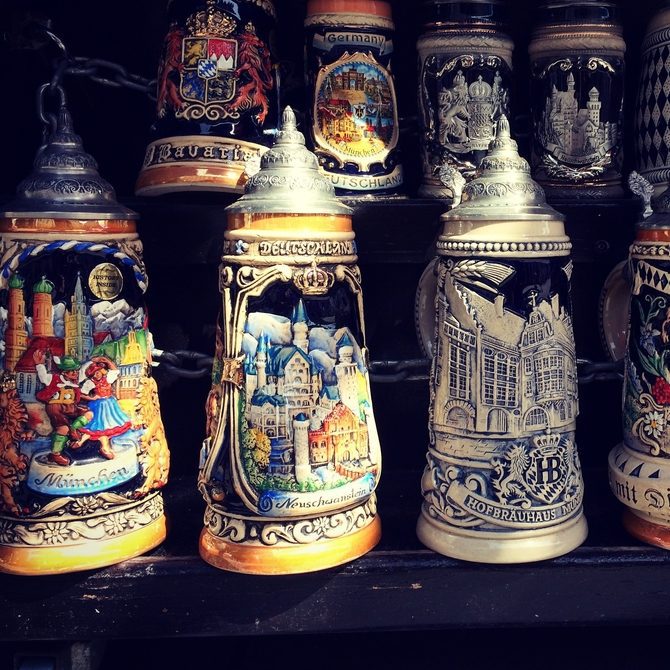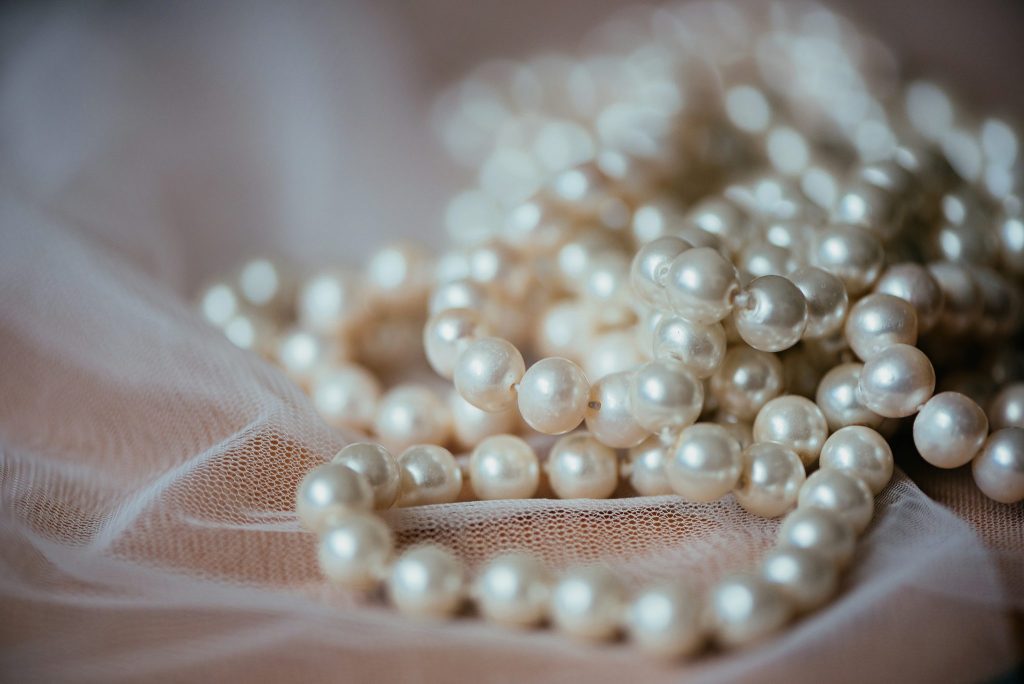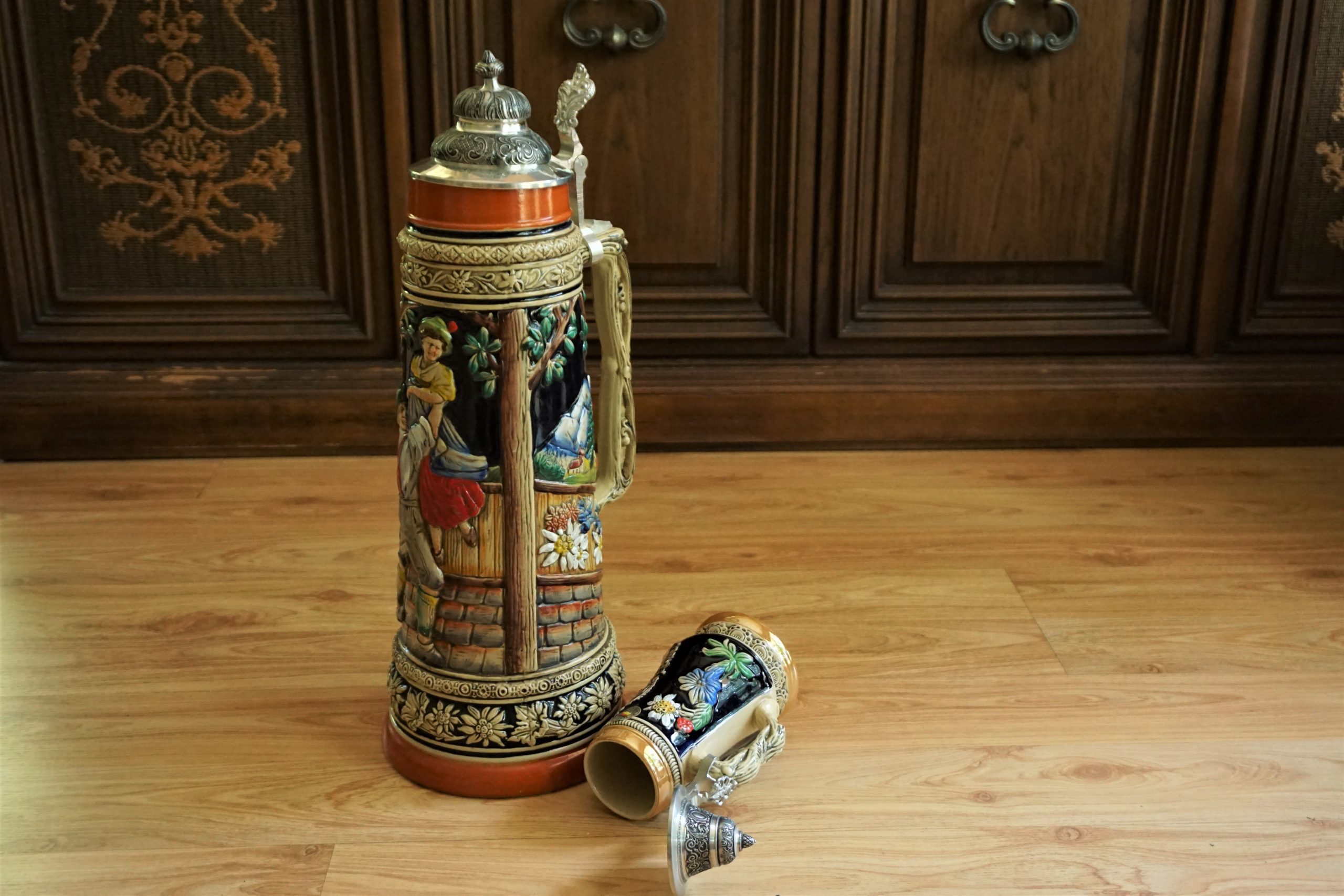They line the walls of basement bars and pubs, but do you ever wonder how to tell if a beer stein is valuable? We’re not talking about the ones adorned with your college football team logo—though they are a valuable reminder of your university days.
We’re talking about the big, lid-wearing beer steins seen at Oktoberfest celebrations.
“Stein” is a German word literally meaning stone but comes from the phrase, “Stein Krug” (stone mug). Steins come in a variety of materials, including ceramic, glass, wood, metal and crystal. And much like storage units, beer steins range in size—from 1 oz to over 8 gallons.
Nearly every stein seller markets their mugs as “vintage” or “authentic.” So how can you tell if your precious pint is worth more than pennies? Whether you’re a stein-collecting connoisseur or you picked up a pint at a thrift shop, here’s how to tell if a beer stein is valuable:
It’s German.
If it’s made in Germany, odds are your stein is special. Investigate the bottom of the glass. Look for “Made in Germany” or “Gemacht in Deutschland.” Obviously if it has a “Made in” mark but the country isn’t Germany, you don’t have an authentic German beer stein.
The lid is lighter on the inside.
Lids are one of the most important features when determining a beer stein’s value. Because it’s a soft metal, air exposure causes pewter to darken over time. If it’s dipped in a darkening agent and made to look old, the entire lid will be dark. However, if upon opening your stein, the inside of the lid is lighter than the outside, you may have a stein of significant value. Another lid lesson: Pewter, cone-shaped lids are typically the least valuable.
There’s no bump on the handle.
It wasn’t until the 1920s that manufacturers began adding bumps to beer stein handles. If your handle has bumps or grooves for your fingers, it was made recently, meaning it’s probably not worth much.
It’s hand-painted.
Examine your mug closely. Many reproduced steins appear to be hand-painted when they’re actually not. Look for imperfections, as well as a raised look on the design.
It tells a story.
Certain illustrations are especially valuable, including scenes featuring:
- Biblical figures
- Battles
- Historical milestones
It’s made out of an expensive substance.
Though some reproduced steins feature these materials too, the most valuable vintage ones are made of silver, ivory or glass.
Beer steins have changed over time, but those variations are subtle. Look closely when examining yours. And consult a professional appraiser to see if your stein is valuable. Whether real or replica, fill your mug and cheers yourself to your new knowledge of beer steins!
After you’ve found out your beer stein is valuable, what next? For starters, you can store it in a temperature-controlled storage unit with SecurCare Self Storage. By offering a variety of self-storage units in several sizes, we also offer some of the most requested features like fenced perimeters and security cameras. We continually strive to satisfy all of our tenants’ storage needs. Chat with us today and store your valuables tomorrow.
Read more about collectibles and antiques on the SecurCare blog.



